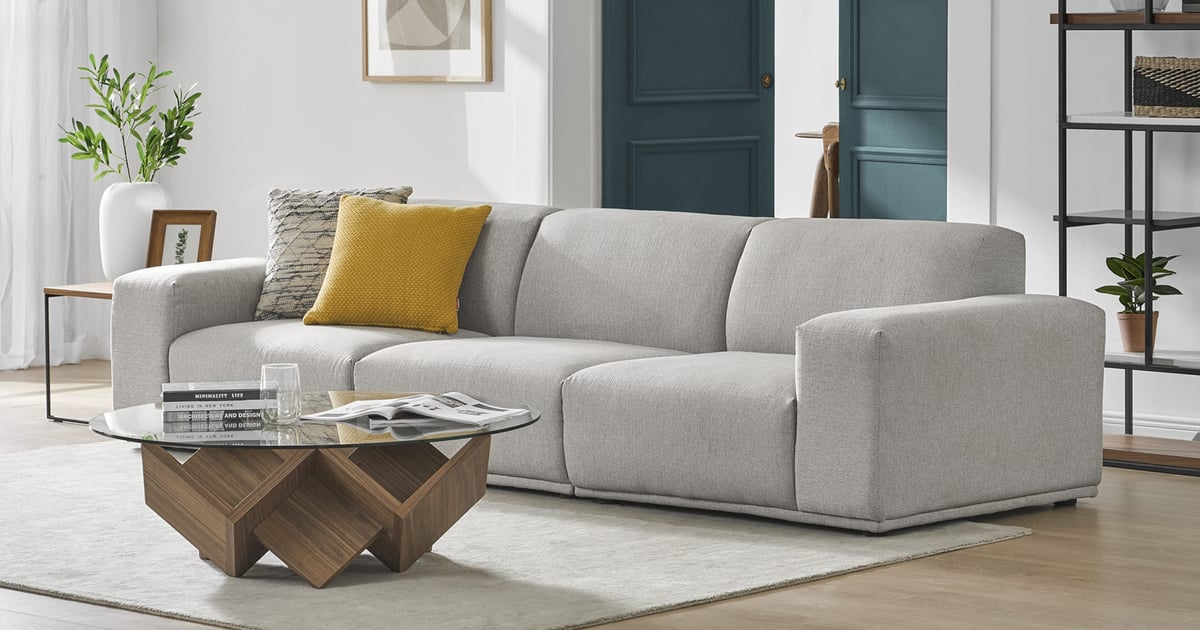When furnishing your home, few pieces are as essential as the sofa. This comfortable focal point for rest, relaxation and entertaining must stand the test of time when it comes to quality and durability. However, moving a bulky couch whenever you redecorate or relocate can be a burden. This is where lightweight sofas can make life easier without compromising on features. Here’s an in-depth look at the benefits, materials and design options for lightweight sofas perfect for any home.

Why Go Lightweight?
Switching to a lightweight sofa offers a few advantages:
- Easy Mobility – Lighter sofas can be readily lifted, carried and maneuvered by just 1 or 2 people. This simplifies rearranging furniture or moving house.
- Multi-Purpose Use – Move a slim, lightweight sofa outdoors for patio lounging or even camping trips. Enjoy cozy seating wherever you go.
- Convenient Shipping – Brands can reduce shipping costs by using lighter frames and cushions. The easier logistics make online ordering and delivery affordable.
- Customizable Layouts – Rearrange the layout frequently to match changing needs. Lateral shifts or completely new positions are quick with a lightweight sofa.
- Accessibility – People with mobility issues, the elderly, pregnant women and children can move or adjust a lightweight sofa independently.

How To Pick The Right Lightweight Sofa
Focus on these factors to choose a sofa with lower weight without compromising on comfort:
Frame Material
The base frame largely determines the weight. Lightweight options include:
- Metal – Steel or aluminum frames offer supreme lightness and strength. However, they can feel cold or transfer temperature.
- Plastic – Durable polymers like resin or PVC are weatherproof while adding little weight. Not as sturdy or high-end looking as wood.
- Wood – Maple, poplar and pine are low-density woods that lower frame weight. Yet they remain solid and attractive.
- Wicker – Hand-woven resin or rattan wrapped on wood frames gives visual lightness. More breathable than cushions.
- Rattan – Naturally lightweight rattan poles or stems form ergonomic, airy frames. Water-resistant and comfortable.
Construction Style
The way the frame is put together also impacts overall heft:
- Modular – Individual cushion segments click together into custom configurations. Rearranging is intuitive with modular pieces.
- Split-Frame – Two or more individual frame sections lock together as needed for mobility. Allows quick breakdown.
- Attached Cushions – For one-piece sofas, attached cushions not filled with dense foam reduce weight. Avoid detachable cushions.
- Legs vs Base – Legs elevate with minimal material versus a solid base. Go legless for a sofa that sits directly on the floor.
- Armless Design – Sectionals with arms only on the ends omit arm structures from middle pieces to pare down weight.
Size
The sofa’s dimensions also influence the weight, with smaller equaling lighter:
- Loveseat – Measuring 48 to 66 inches, a 2-seat loveseat provides cozy lightness for couples or solo relaxation.
- Apartment Sofa – Around 70 to 80 inches wide, these compact sofas are perfect for studio or small space use.
- Modular – Mini sections like armless chairs, corner pieces or ottomans add seating without size or bulk.
- Bench Cushion – Extra slim cushioned benches maximize seating using minimal frame mass. Lift easily for instant guest seating.
Lightweight Materials
Using lightweight upholstery and fill materials helps reduce sofa weight:
- Polyester Fabrics – Synthetic, durable and easy-cleaning polyester adds little weight versus natural fabrics.
- Performance Fabrics – Outdoor fabric made of solution-dyed acrylic or olefin offers weatherproof lightness.
- Microfiber – Durable, stain-resistant microfibercomes in lightweight, breathable weaves.
- Mesh Fabric – See-through mesh maintains air flow on hot days while weighing less than solid textiles.
- Foam Cushions – Light, resilient polyurethane or polyethylene foam cuts heft versus down fillings.
- Hollow Fill – Siliconized polyester hollowfill fluffs up without weight. Resists crushing and clumping.
- Fiber Fill – Polyester staple fiber fill imitates down at a lighter weight. Affordable and hypoallergenic.
